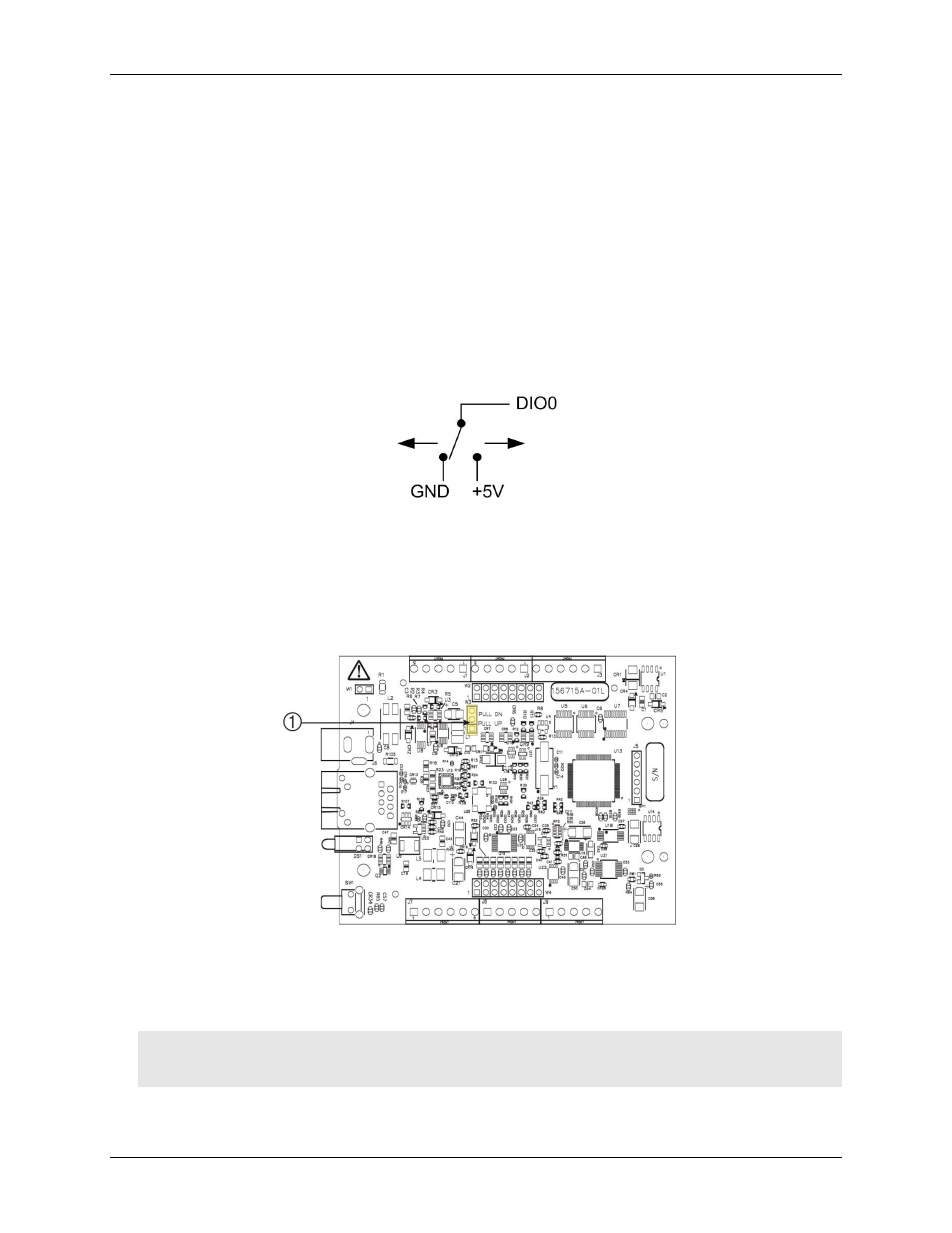External clock i/o, Digital i/o, Pull-up/down configuration – Measurement Computing E-1608-OEM User Manual
Page 16

E-1608-OEM User's Guide
Functional Details
16
Ethernet to the same local network. Typical throughput is not guaranteed if a wireless connection is involved or
data is sent over the Internet.
External clock I/O
The E-1608-OEM provides one external clock input (
AICKI
) and one clock output (
AICKO
) for analog inputs.
You can connect an external clock signal to
AICKI
.
When using the internal clock,
AICKO
outputs the
ADC scan clock.
Digital I/O
You can connect up to eight digital I/O lines to
DIO0
through
DIO7
. Each digital channel is individually
configurable for input or output. The digital I/O connectors can detect the state of any TTL-level input and offer
. advanced BiCMOS output.
Refer to the schematic shown in Figure 4.
Figure 4. Schematic showing switch detection by digital channel DIO0
If you set the switch to the +5 V input, DIO0 reads TRUE (1). If you move the switch to GND, DIO0 reads
FALSE (0).
Pull-up/down configuration
Unconnected inputs are pulled high by default to 5 V through 47 kΩ resistors via jumper
W3
on the circuit
board (see Figure 5).
1
W3 pull-up/pull-down jumper
Figure 5. W3 jumper location
The pull-up/pull-down voltage is common to all 47 kΩ resistors. Jumper W3 is configured by default for pull-
up. Figure 6 shows the jumper configured for pull-up and pull-down.
Caution! The discharge of static electricity can damage some electronic components. Before touching the
board, ground yourself using a wrist strap or touch the computer chassis or other grounded object
to eliminate any stored static charge.
